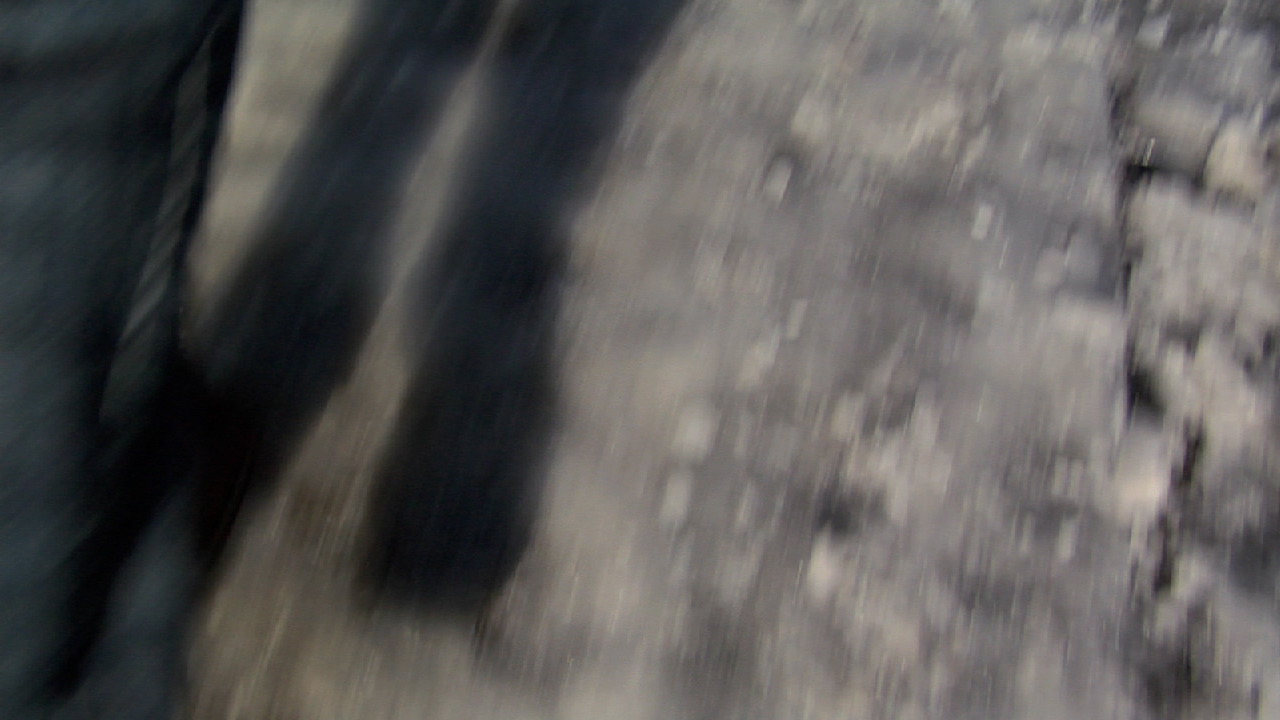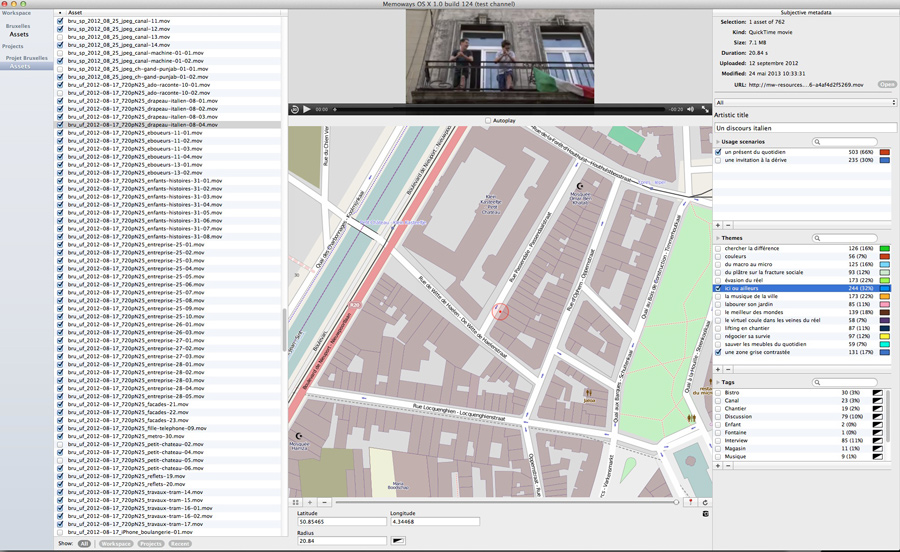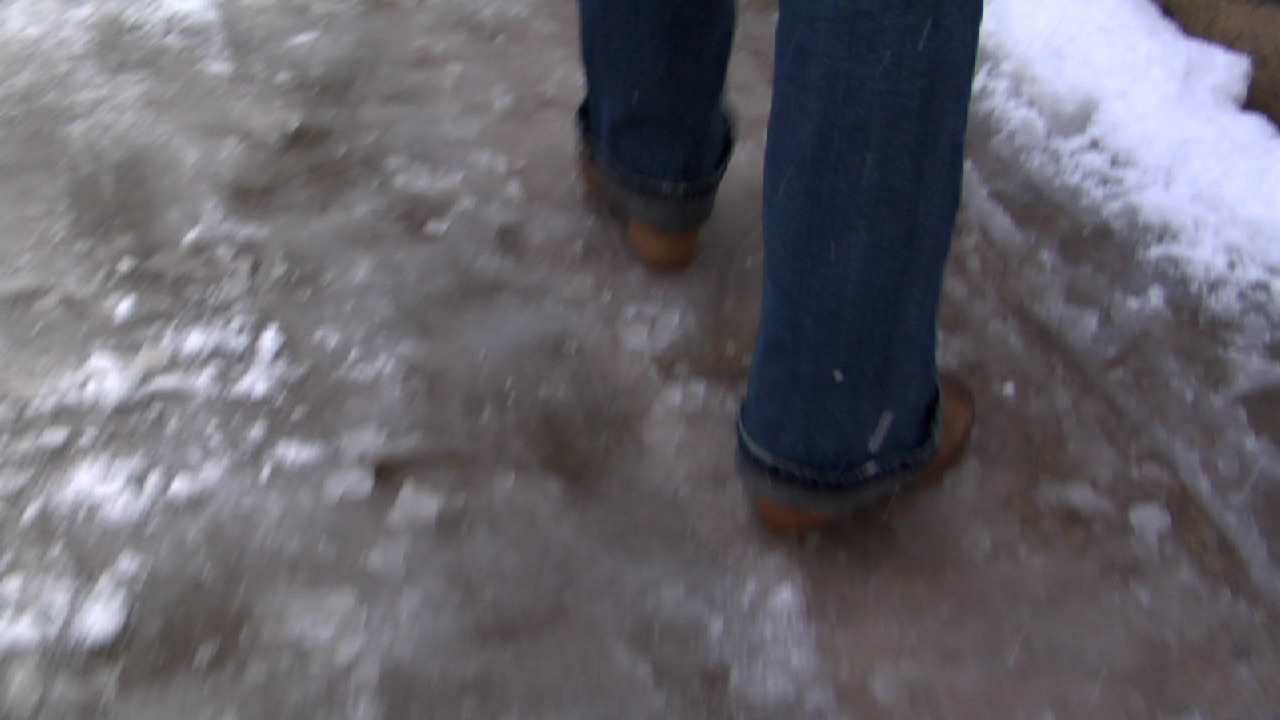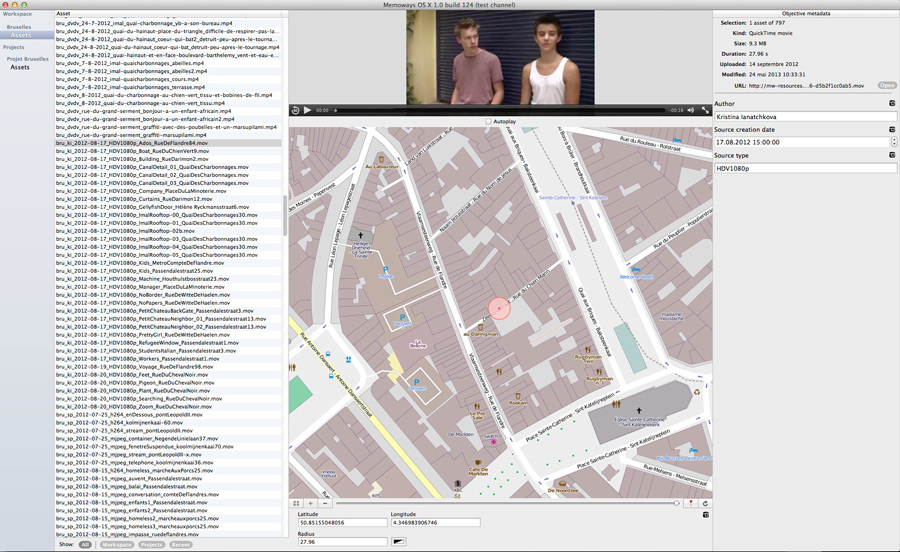Walking through some questions, concepts, answers…
Looking back on our way (lessons learned).
Even in a software centric approach, human decision and choices are very important (in the design of the algorithm, for example): the resulting interactions have to create an immersive experience for the user, leading to a complementary approach to storytelling. The resulting « algorithmic movies » should not be taken as replacements to existing « hand made movies », but as a new narrative continent, where stories unfold through the connections between content, users and places.
The difficulty and the challenges of this project are in finding a right and interesting balance between authorship and (inter)active users, between designing a story and designing a storyworld, between a framed narration and an open experience.
Video-making is not the same anymore. Working in direction of a mainly computational approach (database, metadata & algorithms) is different than creating footage that will be edited by a human, in a traditional way of mastering narration. The way content is created has to be adapted (think heterogenous combinatoric of view points and the value of footage in regard of long term usages); the way content is edited is undergoing a paradigmatic shift (the spatial coverage of videos via a « spaceline » vs. the temporal embedding via a « timeline »); the way content is finally presented and received is also evolving (from a central “here & now” to a networked “everywhere & everytime”, that is furthermore giving a more active place to the viewer, becoming a user)…
In short: all necessary « intelligence » (knowledge) has to be linked to the content (digital documents).
The author is not at the same place anymore. He / she has to take a step back, and see things from « above ». The “story” (what happens) is taking place not through a predefined, editorialized content stream, but through a framed scenography made of interaction possibilities (the UI) and narrative links dynamically made out of the content elements (the database). The responsibility and “value” of the author is therefore not in the “final cut” (closed object), but in his capacity to produce a dynamic community around content and usages.
In the end: the author of the platform is not alone anymore: there are the authors of the content (the video footage) and there are the “authors” of the output (the movie).
Problem setting & « solutions ».
Problems:
How to create new stories and connect them with our context (place, time and scale) ?
How to get people involved (in a project, in a community, in a place) ?
How to use technology in a way that is focusing on human needs and desires ?
Solutions:
Focus on the experience. The story is like the destination, and the experience is like the travel. If people are able to travel on their own, they will get engaged, implicated and connected to the final destination: their story.
Use the machine (hard & software) natively. Trying not to reproduce without translation existing mindsets and creative reflexes: the camera as a computer with an eye, the editing software as an algorithmic toolbox and the final screen of the user as a creative device for interactions…
Build your own platform. As at the begin of cinema where creators where building their own cameras (wood, metal & glass), we are now able to build our own “engines” (mainly through software) to create, combine and share content: in iterative and cyclic flows…
Bridge & translate the new technologies to the human scale. Not pixels, nanoseconds and Human Computer Interactions (HCI) through technical devices, but meters, the duration of a individual breath and the whole human body…
In short: use the computers as connected calculators (the content is living and evolving) and not as an amplification machine (the content is closed and simply copied).




